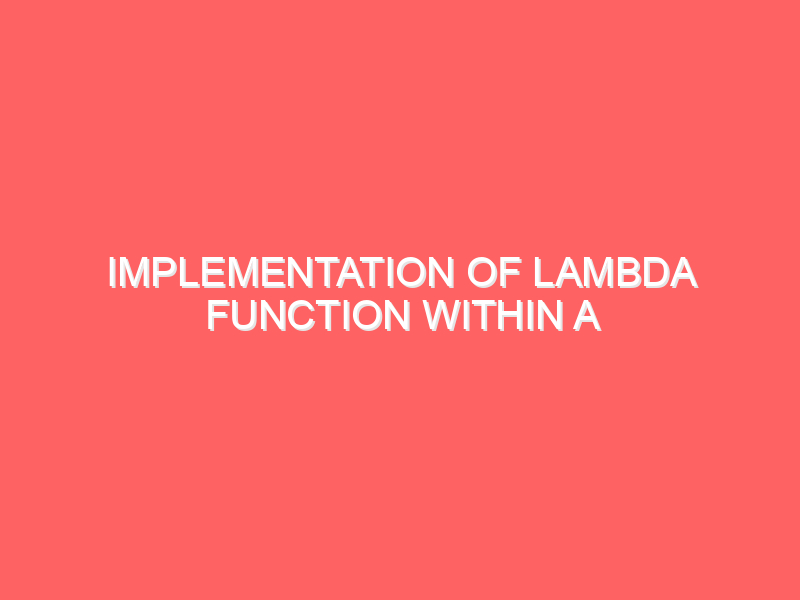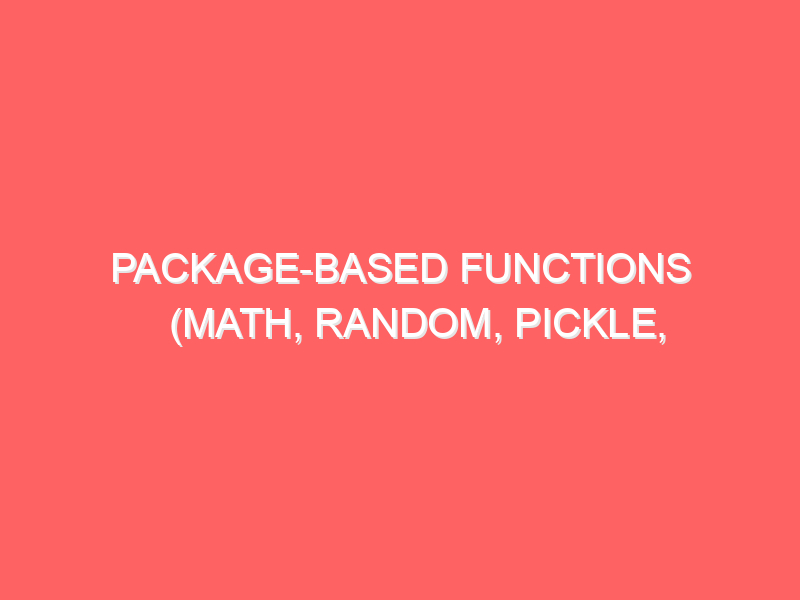Top Machine Learning Packages You Should Know in 2023
Introduction to Machine Learning Packages Machine learning packages are integral tools that facilitate the development and deployment of machine learning models. They provide a collection of pre-written code and functions that streamline various tasks involved in the machine learning workflow. These packages play a crucial role for both novice and experienced data scientists by offering ready-made solutions for common challenges encountered during model building. At their core, machine learning packages encapsulate fundamental concepts that simplify the process of working with data. They allow practitioners to focus more on solving specific problems, rather than being bogged down by the underlying implementation details. By offering functions for data preprocessing, model training, and evaluation, these packages significantly enhance productivity and efficiency in the machine learning lifecycle. For instance, data preprocessing is essential as it converts raw data into a suitable format for analysis, while model training involves feeding this processed data into algorithms to learn patterns and make predictions. Moreover, different types of tasks are supported by machine learning packages, which include regression, classification, clustering, and dimensionality reduction among others. Each package often comes with its own set of algorithms and tools tailored for specific tasks, ensuring that users have access to suitable resources regardless of their project requirements. This modular approach not only makes machine learning more accessible but also promotes experimentation by enabling users to quickly test various algorithms and techniques. In today’s data-driven world, the significance of machine learning packages cannot be overstated. They empower data scientists and analysts to leverage machine learning efficiently, ultimately improving their capabilities to derive insights and make data-informed decisions. As the field continues to evolve, familiarity with these essential tools will undoubtedly be beneficial for anyone looking to advance their understanding and application of machine learning. Popular Machine Learning Libraries In the realm of artificial intelligence, various machine learning libraries have emerged as indispensable tools for developers and data scientists. This section will explore some of the most prominent libraries available today, including TensorFlow, PyTorch, scikit-learn, and Keras, assessing their key features, capabilities, and common use cases. TensorFlow, developed by Google, is one of the most widely used libraries for neural networks and deep learning applications. Its robust architecture supports both CPU and GPU computing, making it scalable for large projects. Key features include support for model deployment across platforms, such as mobile and web, and a comprehensive ecosystem with tools like TensorBoard for visualization. However, its complexity can pose a challenge for beginners. PyTorch, on the other hand, has gained popularity for its dynamic computation graph and intuitive interface, which makes it easier for developers to experiment and modify models on the fly. This library is especially favored in academia and research settings due to its flexibility and ease of debugging. While it excels in custom model training, its deployment might be less straightforward compared to TensorFlow. Scikit-learn is a powerful library designed for traditional machine learning tasks such as classification, regression, and clustering. It provides a user-friendly interface to implement algorithms and a wide range of tools for evaluating model performance. However, it is not optimized for deep learning tasks, which limits its use in advanced applications. Keras serves as an API that simplifies building and training deep learning models, often functioning as a high-level interface for TensorFlow. It allows for rapid prototyping and is particularly user-friendly. Its primary limitation lies in performance when tackling very large datasets or complex models compared to lower-level libraries. In summary, each of these machine learning libraries presents unique strengths and potential weaknesses, catering to different needs and preferences within the machine learning community. Making an informed choice based on specific project requirements and personal proficiency levels is crucial for successful implementation. Emerging Packages and Trends in Machine Learning In 2023, the field of machine learning is witnessing rapid advancements with the emergence of innovative packages and tools that cater to various domains, including AutoML, Natural Language Processing (NLP), and Deep Learning. These emerging libraries are designed to streamline the development processes and enhance the capabilities of machine learning applications. As practitioners strive for efficiency and improved performance, several new packages have gained traction among data scientists and developers. One notable trend is the rise of AutoML solutions, which are designed to automate the time-consuming and complex tasks of model selection, hyperparameter tuning, and feature engineering. Frameworks like Google’s AutoML and H2O.ai are leading the charge, enabling users with limited machine learning expertise to build effective models with minimal effort. These packages democratize access to machine learning by lowering the barriers to entry for new users, promoting a more widespread adoption of data-driven decision-making processes. Moreover, the evolution of Natural Language Processing has led to the emergence of specialized tools that enhance text analysis, sentiment analysis, and language translation capabilities. The OpenAI API, for instance, is reshaping how developers implement NLP in their applications, making it easier to generate human-like text and perform complex language tasks. Such advancements underscore the growing intersection of machine learning and human interaction, pushing the boundaries of what is possible in conversational AI. In the realm of Deep Learning, packages such as TensorFlow 2.0 and PyTorch have evolved to provide improved usability and flexibility. These frameworks are continuously updated to support state-of-the-art research and practical applications, making them essential tools for professionals looking to stay ahead in the dynamic machine learning landscape. The integration of cutting-edge methodologies, including transfer learning and generative adversarial networks, highlights the ongoing trends that are likely to define the future of machine learning development. Choosing the Right Package for Your Project When embarking on a machine learning project, selecting the appropriate package is paramount to success. Various factors must be taken into account to ensure that the chosen package aligns with project requirements, team expertise, and existing system integration. The first crucial aspect to consider is the specific needs of the project. Different machine learning packages cater to diverse functionalities, such as data preprocessing, model building, and evaluation. Analyzing the scope of your project will
Top Machine Learning Packages You Should Know in 2023 Read More »










